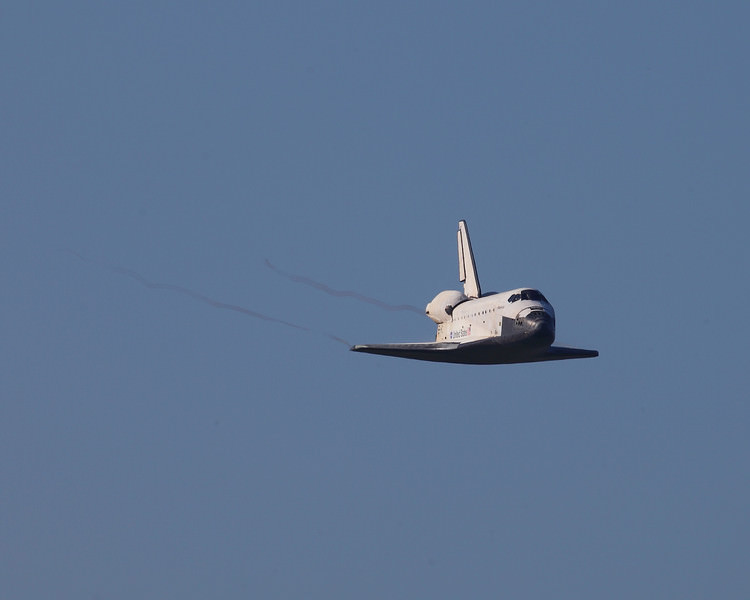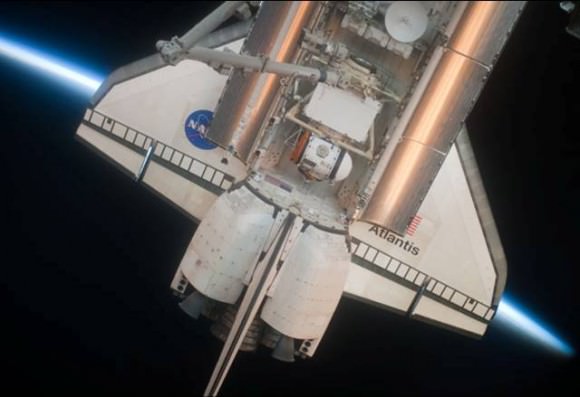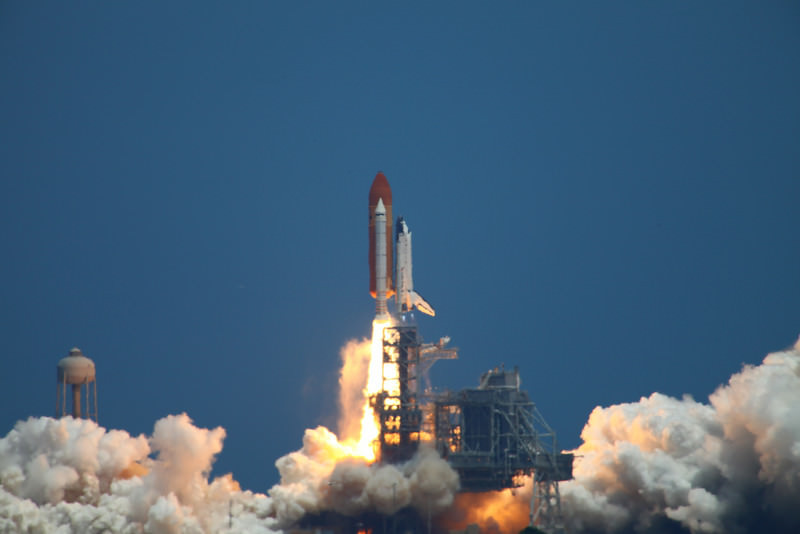[/caption]
KENNEDY SPACE CENTER – The end of NASA’s shuttle era has begun as pre-launch preparations for the final shuttle flight by Space Shuttle Atlantis kicked into high gear. The STS-135 mission is set to launch on July 8 at about 11:40 a.m. EDT on a 12 day flight.
Shuttle Atlantis has been moved about a quarter of a mile from its pre-launch processing hanger – known as Orbiter Processing Facility-1 (OPF-1) – to the Vehicle Assembly Building (VAB) at the Kennedy Space Center in Florida. Check out our eyewitness photo album herein.
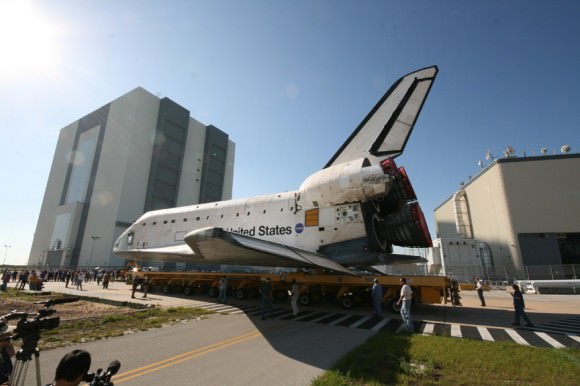
The four person crew of STS-135 was on hand to meet and greet and thank the big crowd of NASA managers and shuttle workers who are preparing Atlantis for the final spaceflight of the Space Shuttle Program after three decades of flight.
Atlantis’ crew comprises of Shuttle Commander Christopher Ferguson, pilot Douglas Hurley and mission specialists Rex Walheim and Sandra Magnus.
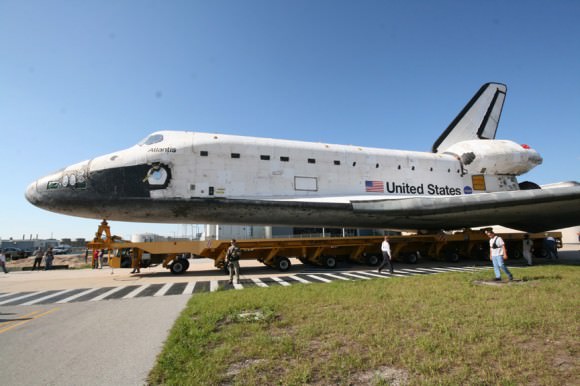
More than a hundred photo journalists representing media worldwide gathered to watch this historic event – known as “rollover”. I had a chance to briefly speak and shake hands with Shuttle Commander Chris Ferguson and wish the crew good luck.
Under a gorgeous clear blue sky, Atlantis was hauled to the VAB – while bolted atop a 78 wheeled transporter – a key milestone setting a clear path to blastoff. Inside the VAB, the orbiter is mated to the external fuel tank and solid rocket boosters before rolling out to Launch Pad 39 A in about two weeks.
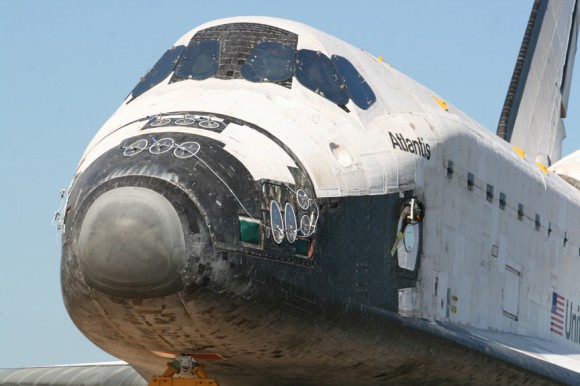
Midway through the road trip, Atlantis was parked for several hours to allow KSC employees to pose for photo opportunities with the flight ready orbiter for the last time.
The goal of Atlantis mission is to carry the Raffaello multipurpose logistics module (MPLM) to the International Space Station (ISS) and stock up the orbiting outpost with science equipment, crew supplies, food, water, logistics, gear and spare parts before the shuttles are retired forever at the prime of their lifetime.
Check back later for more photos
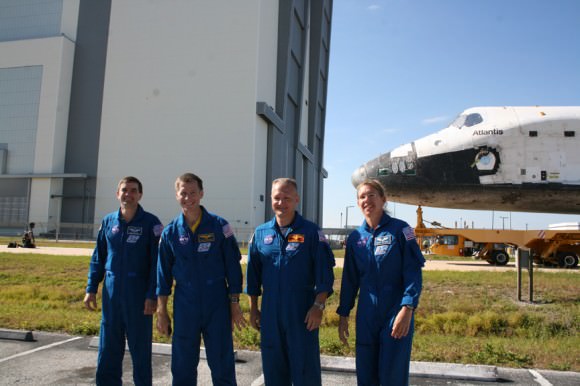

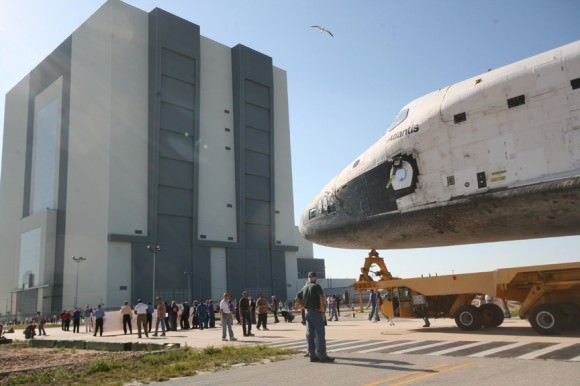

Lack of NASA funding from the US Federal Government is causing the retirement of the Space Shuttles although the orbiters are operating at peak performance. Credit: Ken Kremer




